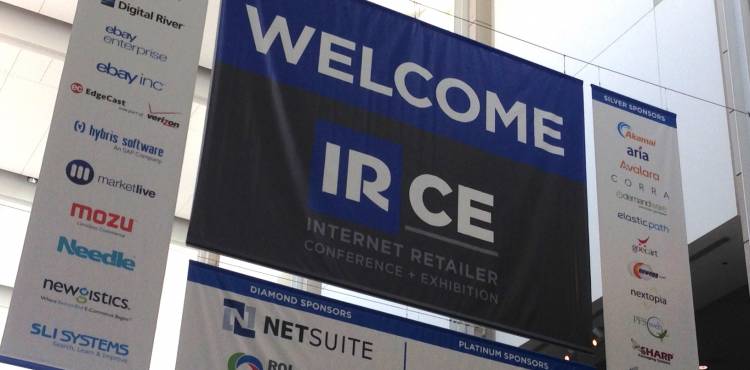eBay CEO defines the commerce revolution

On June 11, 2014, the 10th annual Internet Retail Conference & Exhibition kicked off in expected style. As in years past, the eCommerce industry’s biggest event delivered in the department of big names and hot topics. John Donahoe, CEO and president of eBay Inc., discussed the wisdom of crowds and the commerce revolution in his keynote speech, titled Connected Commerce: The New Opportunity for Retailers in an Evolving Retail Environment.
With 16 years of experience under its belt and a revenue growth rate of 14 percent for 2013 compared to the year prior, eBay certainly has its thumb on the pulse of the online retail world. So much so that Donahoe foresees major changing coming to the industry – and soon, if not now.
"We will see more change in the next three years than we have in the last five to 10 years," Donahoe said to a packed house. "Welcome to the commerce revolution.
“If we step back and look at the world,” he continued, there are four themes that define how the commerce revolution will occur. He labeled those four themes as “consumer in,” “consumer choice,” “consumer service,” and “consumer personalization."
Consumer In
Essentially, Donahoe described the theme “consumer in” from the consumer’s perspective. Although merchants talk in their own industry jargon about various channels, like mobile, online and brick-and-mortar, consumers just talk about shopping. If eBay were to ask a customer why he or she chose to make a purchase on their mobile phone, they might not even remember that was the case. They were, after all, just shopping. When business owners think from an omni-channel, seamless-experience perspective, they will be better equipped to survive and thrive in the years to come.
Consumer choice
Donahoe went on to describe the various demographics of buyers: those who like to buy online and have it delivered to their home or those who want to buy it today and have it delivered today or those who like to shop in store. Well, as it turned out – according to eBay research – these could all be the same shopper. Therefore, it isn’t necessarily about a difference in consumer demographics, it’s more about how many choices those consumers are given.
The point that Donahoe drove home with the audience was that no matter the size of the company, more choices can be offered to customers when online and offline partners work together. He used Argos, a U.K. department store as an example. By working with Argos, which has stores within 15 miles of most people in the U.K., eBay is able to offer customers the choice to pick up their items as opposed to having them delivered to their homes.
Consumer service
In the early days of commerce, the customer was relegated to a self-help model. Unlike shopping in a store with the full service offered by living breathing human beings, offline shopping was a solo endeavor. Today, however, retailers must remember that although consumers love the selection and value that they can get online, they care about service, too. They need online help to define what they should buy, but should they have to return the purchased item, they want to return it in store – 25 percent of their purchases will inevitably be returned. As before, Donahoe stressed that competencies can be increased when online companies partner with offline companies to offer great service.
Consumer personalization
Enter the idea of the wisdom of the crowd. Although the crowd might be able to help a retailer provide a likely accompaniment for an item placed in a shopping cart, those insights only scratch the surface in terms of personalization. The crowd creates a lot of data for retailers to collect; the challenge is trying to figure out how to leverage it.
“No one has cracked the nut just yet as to how to provide the most personalized experience possible,” he said. But whoever does will have the competitive edge. When tackling the endeavor of personalization, some will emerge as winners, but others will face challenges. The key to remember, Donahoe reminded the audience, is that it doesn’t matter if you’re big or small.
To bring the keynote full circle, Donahoe said that the commerce revolution won’t necessarily dictate the future of one channel or another. He also said that he doesn’t believe the conventional wisdom that offline is dead or that online is going to dominate or that mobile is the most important channel to focus on. In the end, there will be winners and losers – both online and offline. The winners, however, will be those who put the customer in the middle of those two channels.